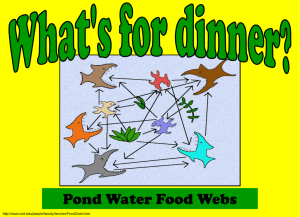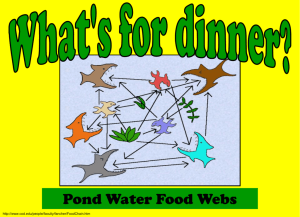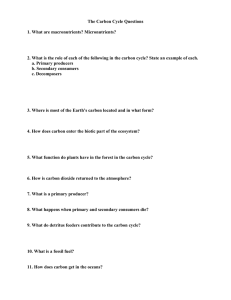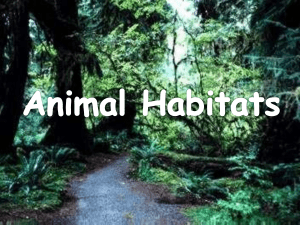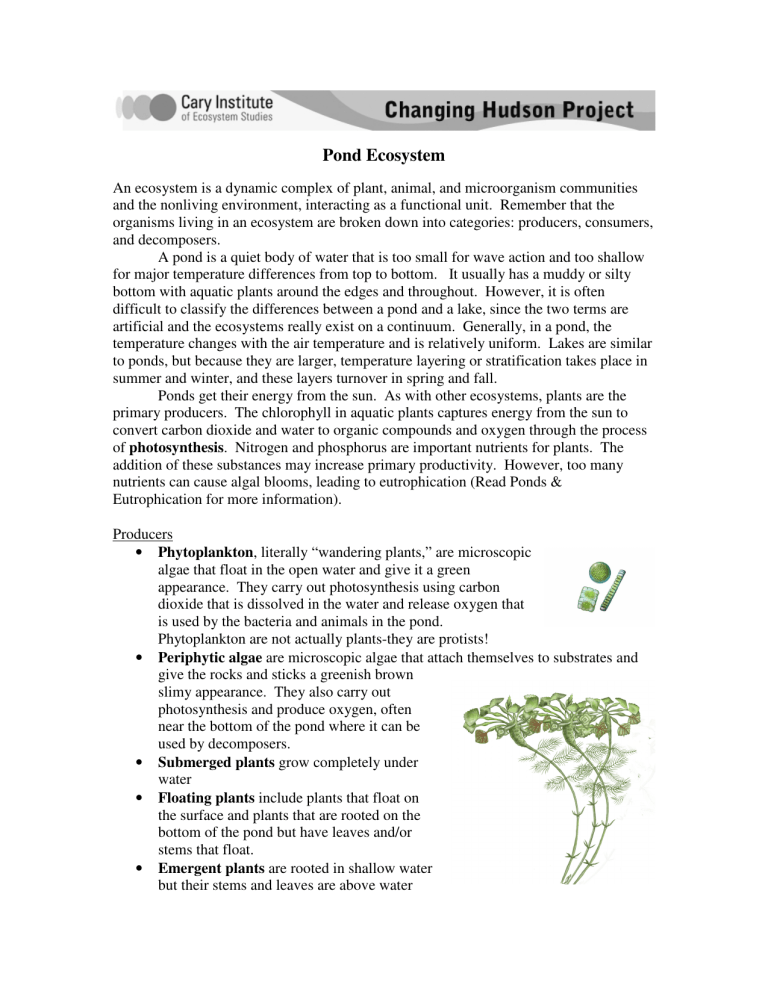
Pond Ecosystem An ecosystem is a dynamic complex of plant, animal, and microorganism communities and the nonliving environment, interacting as a functional unit. Remember that the organisms living in an ecosystem are broken down into categories: producers, consumers, and decomposers. A pond is a quiet body of water that is too small for wave action and too shallow for major temperature differences from top to bottom. It usually has a muddy or silty bottom with aquatic plants around the edges and throughout. However, it is often difficult to classify the differences between a pond and a lake, since the two terms are artificial and the ecosystems really exist on a continuum. Generally, in a pond, the temperature changes with the air temperature and is relatively uniform. Lakes are similar to ponds, but because they are larger, temperature layering or stratification takes place in summer and winter, and these layers turnover in spring and fall. Ponds get their energy from the sun. As with other ecosystems, plants are the primary producers. The chlorophyll in aquatic plants captures energy from the sun to convert carbon dioxide and water to organic compounds and oxygen through the process of photosynthesis. Nitrogen and phosphorus are important nutrients for plants. The addition of these substances may increase primary productivity. However, too many nutrients can cause algal blooms, leading to eutrophication (Read Ponds & Eutrophication for more information). Producers • Phytoplankton, literally “wandering plants,” are microscopic algae that float in the open water and give it a green appearance. They carry out photosynthesis using carbon dioxide that is dissolved in the water and release oxygen that is used by the bacteria and animals in the pond. Phytoplankton are not actually plants-they are protists! • Periphytic algae are microscopic algae that attach themselves to substrates and give the rocks and sticks a greenish brown slimy appearance. They also carry out photosynthesis and produce oxygen, often near the bottom of the pond where it can be used by decomposers. • Submerged plants grow completely under water • Floating plants include plants that float on the surface and plants that are rooted on the bottom of the pond but have leaves and/or stems that float. • Emergent plants are rooted in shallow water but their stems and leaves are above water most of the time. • Shore plants grow in wet soil at the edge of the pond. Consumers • Zooplankton are microscopic animals that eat phytoplankton or smaller zooplankton. Some are single-celled animals, tiny crustaceans, or tiny immature stages of larger animals. Zooplankton float about in the open water portions of the pond and are important food for some animals. • Invertebrates include all animals without backbones. Macroinvertebrates are big enough to be seen with the naked eye. Some of them are only found in clean water. • Vertebrates are animals with backbones. In a pond these might include fish, frogs, salamanders, and turtles. Decomposers Animal waste and dead and decaying plants and animals form detritus on the bottom of the pond. Decomposers, also known as detritovores, are bacteria and other organisms that break down detritus into material that can be used by primary producers, thus returning the detritus to the ecosystem. As this material decomposes it can serve as a food resource for microbes and invertebrates. During decay microbes living on detritus can pull nutrients from the overlying water thus acting to improve water quality. In the process of breaking down detritus, decomposers produce water and carbon dioxide.
